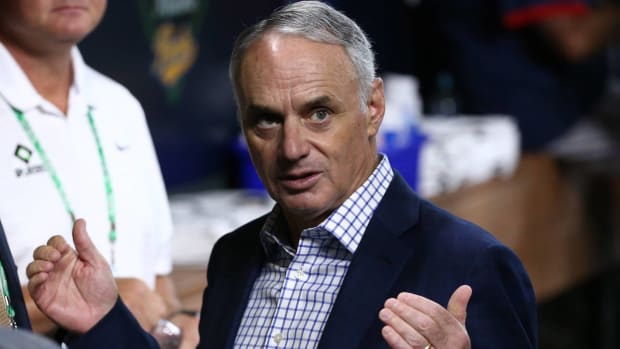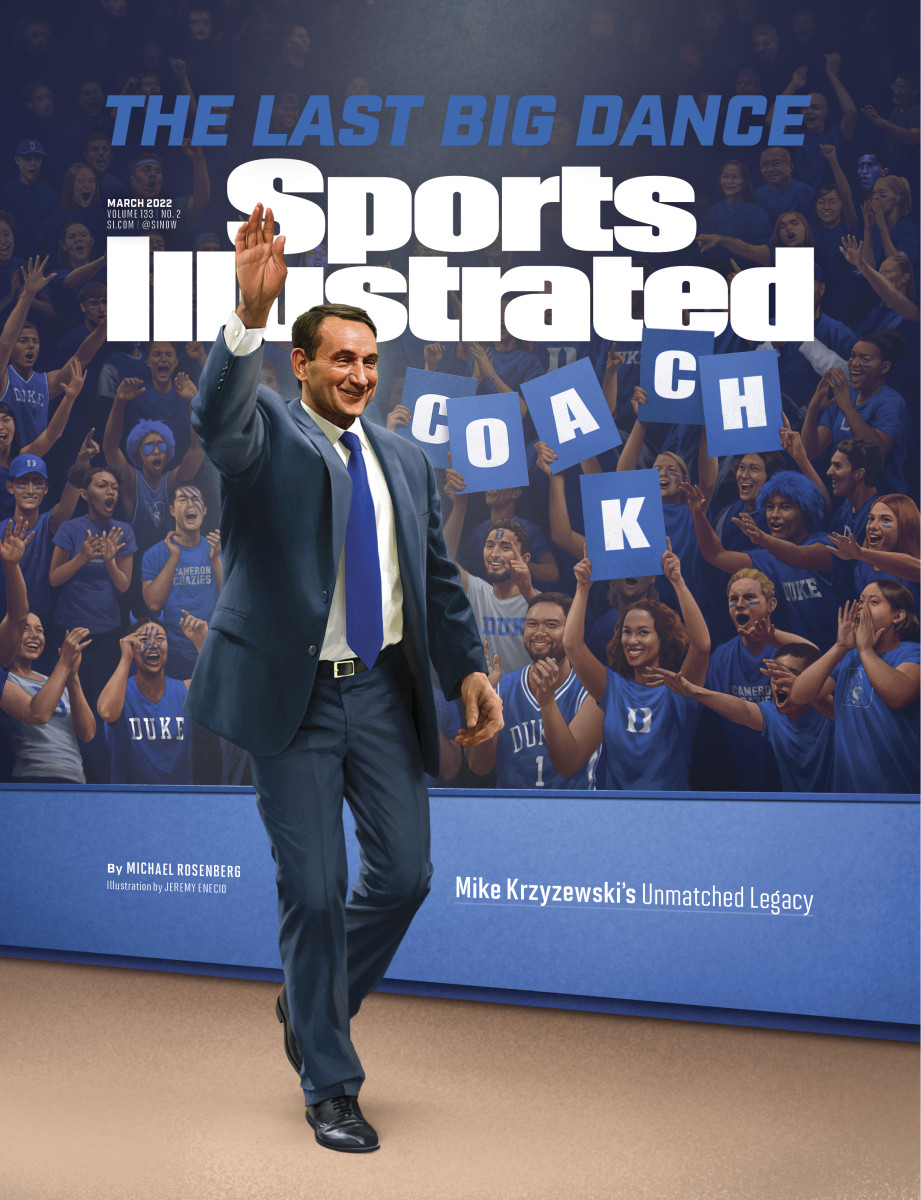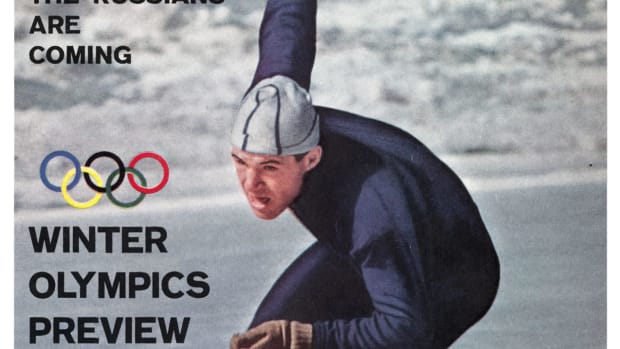SI:AM | MLB Goes After Minor Leagues (Again)
Good morning, I’m Dan Gartland here with another example of MLB owners being cheapskates.
If you're reading this on SI.com, you can sign up to get this free newsletter in your inbox each weekday at SI.com/newsletters.
More penny pinching from MLB

MLB, fresh off the massacre of dozens of minor league teams, wants to be able to make even more cuts to the minors, ESPN’s Jeff Passan reports.
First, some background: In December 2020, the league axed 42 minor league teams, reducing the total number of affiliates to 120 (one team each at the Triple A, Double A, High A and Low A levels for all 30 MLB clubs). As part of that restructuring, MLB introduced something called the Domestic Reserve List—a limit on the number of minor league players big league clubs are allowed to have under contract. Currently, teams are allowed to roster as many as 180 minor leaguers during the season (190 during the offseason). Before then, there was no limit on the number of minor leaguers a team could sign.
What MLB wants: According to Passan, the league recently proposed to the players’ union that the commissioner’s office be allowed to reduce the maximum number of players on the Domestic Reserve List to as few as 150. That’s a reduction of 30 players, times 30 teams, for a total of 900 fewer minor leaguers. Give Passan credit for plainly stating what the league is asking for: “the ability to eliminate hundreds of minor league playing jobs.”
Here’s a funny line from Passan’s story: “The proposal says the league could adjust the reserve list’s size ‘up or down.’” Is there a single baseball fan alive who is naive enough to believe that the league would actually reverse course on a cost-cutting move? Everything MLB has done in the past decade has been with the goal of helping billionaire owners pinch pennies.
And to be clear, the savings teams would incur from cutting up to 30 minor league jobs would be modest at best. Even though MLB has successfully been shamed into offering minor leaguers higher minimum salaries, pay for players on farm teams is still abysmal. The minimum salary for a guy in Triple A is $16,800. Multiply that by 30 players and you’re looking at a savings of $504,000. Realistically, though, the players being cut would be at the lower levels. If the 30 players being cut were split evenly between High A (minimum salary: $12,000) and Low A ($9,600), teams would save $324,000. That’s nothing. It’s a rounding error.
Given the pittance they would be saving, reducing the number of prospects in a team’s system doesn’t make much sense to me. As Meg Rowley of FanGraphs points out, cutting prospects places added pressure on a team’s player-development and player-evaluation departments. Every minor leaguer is a lottery ticket. Teams have some tickets (first-round picks and high signing-bonus international free agents) that they’re pretty sure they’re going to hit the jackpot on. But plenty of longshots end up being quality major league players, too. Why wouldn’t a team want to spend a couple hundred thousand dollars on two dozen guys in A-ball when there’s a decent chance one of them ends up being a big leaguer worth millions?
It seems like most MLB teams are thinking along those lines. Currently, Passan reports, only two teams have fewer than 150 players on their Domestic Reserve Lists, while five teams have more than 180.
The good news is that MLB’s plan seems unlikely to come to fruition. The union intends to reject the proposal, Passan reports. But the fact that the league wanted control over something so seemingly trivial should stick in fans’ minds and be a reminder of who the bad guys are in this ongoing labor battle.
The best of Sports Illustrated

With the Super Bowl in the rearview mirror, we’re approaching the climax of college basketball season. SI just released its March 2022 mag cover featuring an icon of men’s hoops: Mike Krzyzewski. Love him or hate him, Coach K’s career, which will end after this season, has highlighted his ability as an elite team-builder, Michael Rosenberg writes.
Greg Bishop and Conor Orr’s Super Bowl game story didn’t come out until after yesterday’s newsletter was sent, but it’s definitely still worth reading. … Jimmy Traina thought Al Michaels and Cris Collinsworth “gave normal, solid efforts” during the Super Bowl but says that’s “actually a compliment.” … Rosenberg sees the Kamila Valieva drug test saga as the latest example of the IOC bowing to Russia.
Around the sports world
The NBA has reinstated Tyreke Evans after a two-year ban. … James Harden’s hamstring will keep him from making his Sixers debut until after the All-Star break. … Cleveland’s Jarrett Allen will replace Harden in the All-Star Game. … Jack Eichel will make his debut for the Golden Knights tomorrow night. … Here is the goal that lifted Boston University over three-time defending champ Northeastern in the Beanpot championship. … Because of the unresolved controversy involving Valieva, there won’t be a medal ceremony if she finishes top-three in Beijing. … Sprinter Sha’Carri Richardson thinks the way Valieva’s situation has been handled is hypocritical.
The top 5…
… moments from Beijing:
5. American Nick Goepper’s run in slopestyle skiing
4. Dutch win bronze in speed skating team pursuit, giving Ireen Wüst her 13th Olympic medal
3. Canadian women set Olympic record in team pursuit
2. Chinese snowboarder Su Yiming’s gold medal-winning big air run
1. American snowboarder Chris Corning lands the first quad cork in Olympic history
SIQ
The finish to the 1976 Daytona 500 (run on this day) is widely regarded as the most dramatic in NASCAR history. Who were the two drivers who crashed into the wall just before crossing the finish line?
Check tomorrow's newsletter for the answer.
Yesterday’s SIQ: The Rams are the third team to win the Super Bowl while representing multiple cities. Who are the other two?
Answer: The Colts and Raiders. Johnny Unitas led the Baltimore Colts to victory in Super Bowl V 36 years before Peyton Manning won with Indianapolis. The Raiders won their first two Super Bowls during their first stint in Oakland, then moved to Los Angeles and won one more before going back to Oakland and later Las Vegas.
From the Vault: Feb. 15, 1960

Before seeing this image of Soviet speed skater Gennady Voronin on an outdoor rink, I hadn’t considered that speed skating events were once held outside like track and field. In fact, the last Olympics to feature outdoor speed skating was 1992 in Albertville. Skaters glided around the oval with the Alps providing a stunning backdrop.
But after I started writing the paragraph above, I discovered something shocking about the man on the cover. Voronin’s life took a tragic turn a few years after the Olympics, when, in 1966, he stabbed his wife to death. Inga Artamonova, like her husband, was an elite speed skater, a four-time World Allround champ. She once set four world records in the span of two days.
According to stories on several poorly translated Russian websites, Artamonova (also known as Inga Voronina after her marriage to Voronin) had filed for divorce and Voronin showed up drunk at Artamonova’s parents’ house to confront her. She invited him inside, where he stabbed her in the heart. Voronin was reportedly jealous of the relationship Artamonova had with a Swedish man she had met while competing there. One source even speculates that the KGB planted the seeds for Voronin’s jealousy by leaving anonymous letters about Artamonova’s affair in his mailbox. After her death the speed skating tournament at Lake Placid, N.Y., created the Inga Voronina Award for the top woman at the competition.
Check out more of SI's archives and historic images at vault.si.com.
